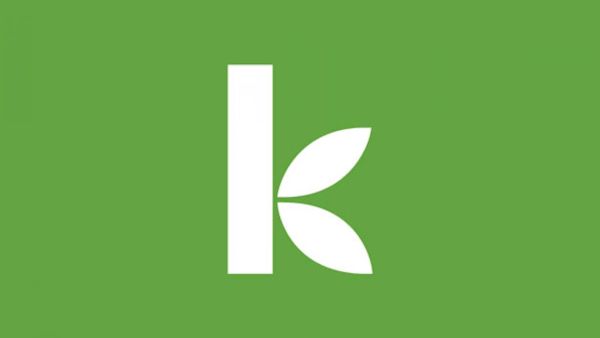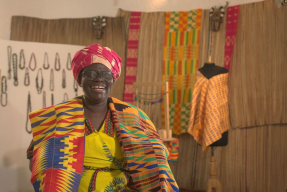
By Brian Kelly, KF10, Sri Lanka
People always enjoy picking things apart from a distance. To me it seems like microfinance has taken a bit of a beating in the last eight months or so. Most probably that’s because it was about eight months ago that I became immersed in this world when I started my fellowship as a KF9, my first foray into the industry. But I also think it’s because of the rapidly growing attention microfinance has gotten over the last half-decade, from a nobel prize, to the proliferation of interesting organizations like Kiva and other online funders springing up, as well as bold claims like “microfinance will cure poverty.”
Microfinance’s publicity has paved the way for skeptics and critics to jump at the opportunity to point out every findable foible. There’s been a fair amount of recent talk here on this blog, but also even running in places like the New York Times, about interest rates in the industry. Questions have emerged regarding whether or not it’s unfair to levy rates on the poor that some see as usuriously high (I’m making that word up if it doesn’t already exist). And I won’t lie, my thoughts and feelings towards microfinance over the last two placements have been more sobering than rosy, and I’ve come to a lot more harsh realizations than poverty-eradicating epiphanies. However, I think there is an important aspect that many long-distance observers miss, and its something that took being out in the field to notice about microfinance institutions and their role in the world. So I’ll share.
It’s the little and sometimes intangible services and offerings that these tireless organizations known as MFIs provide that often go overlooked. The first time I processed this realization was after my umpteenth trek out to a group of borrowers via bumpy roads running alongside paddy fields here in Sri Lanka (and this could have just as easily been 5 months ago trekking through farmland and villages during the brisk Armenian winter). It dawned on me that we were always making efforts far and wide to come to the borrower. MFIs are pretty damn good about getting out to remote and scarce areas to consistently serve their clients. I can’t speak for absolutely all MFIs, but I do know from reading countless stories of other Kiva Fellows that this is common practice all over the world. Not a lot of banks I know do that, unless they’re showing up to serve you a repossession notice and subsequently speed away in your former ride because they’re late for a TARP party.
I know that we often make note the high costs of serving rural and remote villages, (running counter to my point that it is overlooked) but that often gets cited when we’re talking numbers or doing analysis through the cost lens. To me it seems that we forget to highlight the important driver of those costs, the carrying out of the social mission to serve those in need. These instituions are catering directly to the borrowers here, doing whatever is needed in order to make it easier on the client. The borrower may not have the resources to travel, so the MFI is going to see to it however they must that they will serve these clients, if even in the middle of a carrot field.
That started me thinking about the little things that microfinance does, the stuff that doesn’t always get captured on paper, statistical studies, or in criticisms. And when you start to look around, you realize there are a lot of these little things in action sprinkled throughout an MFI’s operations. Some MFIs provide skills training. Others provide benefits such as scholarships to clients’ children, or loan referral perks for recruiting friends and neighbors. All of them seem to focus intently on client retention. MFIs customize product offerings and tailor them to their clients in a way that works best FOR the client. High repayment rates help provide evidence of that. Basically they structure their products in a way that will most effectively serve their constituents. And this is the right thing to do. It just seems unfair to me, especially when I see comments on blogs or even in Kiva lending teams, that people think these MFIs are exploiting their clients to make money hand over fist. In reality, most of these MFIs are busting their tails night and day to serve their clients while trying to manage their own risks and operate as a healthy business.
These MFIs build trust with their clients through the relationships cultivated by the credit officers. They provide a consistent service, one that they may offer three, four, or ten times to a given client; as often as the borrower is willing to come back and make their payments on time. And the people do come back. They are voting with their feet, openly approving what an MFI does, by keeping them in business. Clients successively take more and more loans, (and despite some suggestions, most often without over-indebting themselves) which is the greatest evidence that these organizations are doing their job right and filling a need in their societies.
My point, I think, is that a lot of times there are small factors at work in an MFI. Little daily events that you might not think twice about, but are really some of the key drivers that make this model valuable for its constituents. It’s easy to pick microfinance apart with a few jaw-dropping statistics and shock the uninitiated, but much harder to really look closely at what an organization is doing right. Peering in and noting the little things, and putting them in context to see the overall benefits on society is difficult, but something we need to do more of. I don’t think microfinance is the end-all answer to poverty as I once might have back when I first heard of the concept. But I do think it is important to note how valuable this service is to the borrowers, people who are coping with some of the most dire situations on the planet. And if you keep your eyes open, I’ll bet you start to notice some of the little things at work.
Brian Kelly is a member of KF10 working with pilot partner BRAC Sri Lanka. To support a Sri Lankan loan, go here! To join the Sri Lankan lending team, check out this link.
PREVIOUS ARTICLE
The Road Ahead for Kiva and Urwego Opportunity Bank in Rwanda →NEXT ARTICLE
On the vanity of words →













